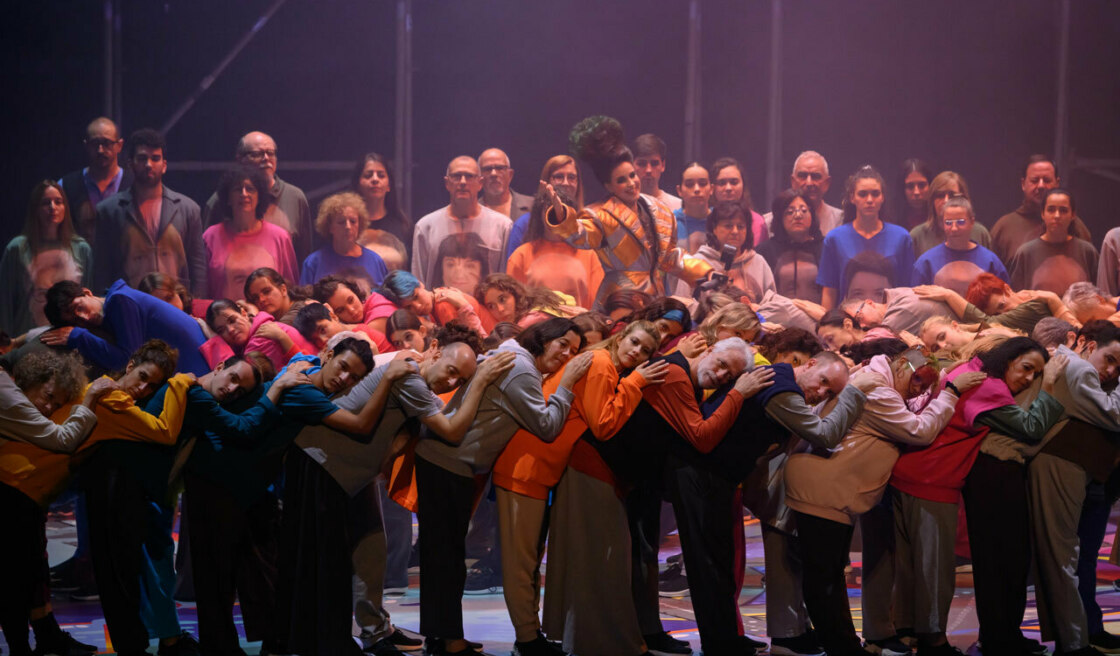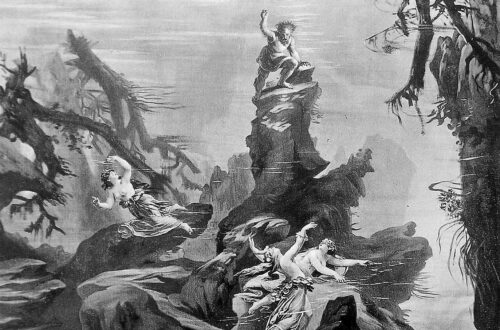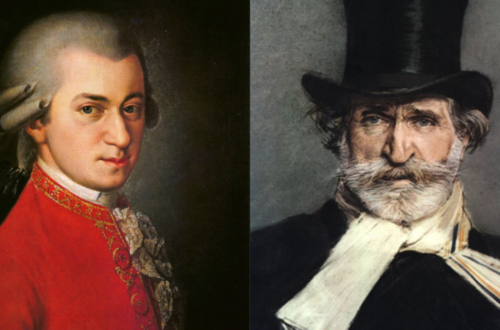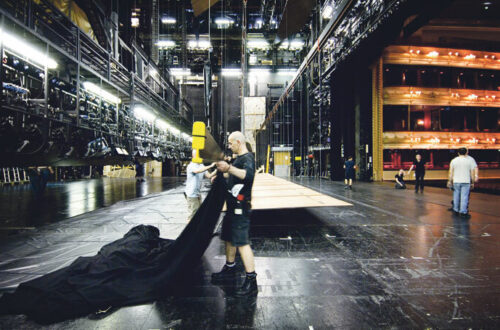Producing an opera is a grand undertaking that involves the seamless coordination of various artistic and technical elements. From the inception of the idea to the final curtain call, the production of an opera is a complex and multifaceted process that requires the collaboration of talented individuals from diverse fields. This article provides an in-depth exploration of the journey behind the scenes, shedding light on the intricacies involved in bringing an opera to life.
If you are traveling abroad to watch opera and you need transport to the airport you can use Airport Shuttle Services.
Conceptualization and Libretto Development

At the heart of every opera is a compelling story, and the journey begins with the conceptualization of the production. The libretto, the opera’s text, plays a pivotal role in shaping the narrative and setting the stage for the entire creative process. Writers and composers work in tandem to craft a libretto that not only captures the essence of the story but also provides a solid foundation for the musical composition. This collaborative effort involves numerous revisions and discussions to ensure that the libretto seamlessly integrates with the music, creating a harmonious and engaging experience for the audience.
The libretto’s development is a dynamic process, with constant back-and-forth between the writer and composer. It requires a delicate balance between lyrical beauty and dramatic impact, as the words will be brought to life through the powerful medium of operatic singing. This phase of production sets the tone for the entire opera, influencing the director’s vision, costume design, and musical arrangements. The challenge lies in creating a libretto that not only resonates with the audience but also provides ample opportunities for the performers to showcase their vocal prowess.
You can use the best Denver limo service and drive to watch opera in style.
As the libretto takes shape, the creative team delves into the world of the opera, immersing themselves in the historical and cultural context of the story. This deep dive allows for a nuanced understanding of the characters, their motivations, and the overarching themes that will be portrayed on stage. The conceptualization and development of the libretto thus serve as the cornerstone of the entire opera production, laying the groundwork for the subsequent stages of the creative process.
Serbia is famous for having amazing operas. You can travel to Belgrade and rent a vehicle from rent a car Beograd to drive around the country and enjoy Serbian theaters.
Musical Composition and Orchestration
With the libretto in hand, the composer embarks on the intricate task of creating the musical score that will breathe life into the opera. The musical composition is a delicate dance between melody and emotion, requiring a profound understanding of both the vocal and instrumental elements. Composers work closely with conductors and musicians to ensure that the score captures the essence of the story and complements the themes explored in the libretto.
The orchestration of the opera is a meticulous process that involves assigning specific musical elements to various instruments within the orchestra. This phase requires a keen ear for balance and nuance, as the orchestration plays a crucial role in conveying the emotional nuances of the narrative. Composers collaborate with experienced orchestrators to bring their musical vision to fruition, considering factors such as instrumentation, tempo, and dynamics to create a rich and evocative sonic tapestry.
Rehearsals with the orchestra are a critical component of the production process, allowing the conductor to fine-tune the interpretation of the score and ensure a cohesive performance. The orchestra serves as a dynamic partner to the vocalists, enhancing the overall impact of the opera and providing a powerful backdrop to the unfolding drama on stage. The marriage of music and libretto is a delicate yet transformative process, culminating in a symphonic masterpiece that elevates the opera to new heights.
If you are looking to sell your business to open a theater you can contact M&A business advisors.
Stage Design and Costume Creation
As the musical elements of the opera take shape, attention turns to the visual and theatrical aspects of the production. Stage design and costume creation are integral components that contribute to the immersive and enchanting experience of opera. The set design serves as the backdrop for the unfolding narrative, transporting the audience to different worlds and eras. When building a set organizers have to work with a construction expert witness.
Collaboration between set designers, directors, and lighting specialists is paramount in creating a stage that complements the mood and themes of the opera. Each set must be meticulously crafted to accommodate the dramatic and dynamic movements of the performers, providing a canvas for the unfolding spectacle. From grandiose backdrops to intimate, detailed sets, the stage design is a visual manifestation of the opera’s narrative, enhancing the overall impact on the audience.
Opera stages and costumes are often very expensive so the producers hire someone like the security company in Los Angeles to make sure that everything is safe.
Equally important is the creation of costumes that not only reflect the historical or fantastical setting of the opera but also capture the essence of each character. Costume designers work closely with directors and performers to ensure that every garment contributes to the visual storytelling. The costumes must be both functional and aesthetically pleasing, allowing performers the freedom to convey their characters while maintaining the integrity of the production’s visual design.
When producers need a loan to build a stage they often contact the best mortgage brokers in Raleigh NC.
Rehearsals and Artistic Collaboration
With the libretto, musical score, stage design, and costumes in place, the production moves into the rehearsal phase, where the various elements converge to bring the opera to life. Rehearsals are a hive of artistic collaboration, with directors, conductors, singers, and production staff working in tandem to refine every nuance of the performance. The dynamic interplay between these creative forces adds a layer of complexity and depth to the production, infusing it with the energy and spontaneity that define a live operatic experience. Rehearsals can be exhausting and some outdoor activities like fishing could help you relax and regain energy. If you like fishing be sure to check a bass fishing forecast to make sure that the weather is perfect.
Singers undergo rigorous vocal rehearsals to master the intricacies of the score and breathe life into the characters they portray. Directors guide performers through blocking and choreography, ensuring that the stage comes alive with compelling and visually stunning sequences. The orchestra, singers, and actors converge in full-dress rehearsals, providing a preview of the seamless integration of music, drama, and spectacle that awaits the audience.
Artistic collaboration extends beyond the performers to include technical and production teams working behind the scenes. Lighting designers play a crucial role in enhancing the mood and atmosphere of the opera, using light to accentuate key moments and evoke emotion. Sound engineers work tirelessly to achieve the perfect balance between vocal and orchestral elements, ensuring that every note and word resonates with clarity and impact.
If you want to start a blog about the opera you should find the best hosting provider for your website.
Post-Performance Reflection and Audience Impact

As the final notes of the opera linger in the air, the production doesn’t conclude with the closing curtain. Instead, it enters a new phase of reflection and evaluation. Directors, performers, and the entire production team engage in post-performance discussions to assess the success of the production and identify areas for improvement. This critical reflection is essential for the continuous growth and evolution of the opera, ensuring that each performance builds upon the successes and challenges of its predecessors. Many operas use window blinds to hide some scenes. The best ones are window shutters in Provo UT.
Post-performance reflection involves gathering feedback from both the artistic team and the audience. Directors and performers share insights into the dynamics of the performance, discussing moments of artistic brilliance and identifying areas where the production can be refined. This collaborative and constructive feedback loop fosters a culture of continuous improvement, pushing the boundaries of creativity and innovation in future productions.
Audience impact is a crucial aspect of post-performance analysis. The reactions and responses of the audience provide valuable insights into the effectiveness of the production in conveying its intended emotions and messages. The audience’s engagement, applause, and emotional resonance with the performance offer a gauge of success and contribute to the collective memory of the opera. This feedback loop between performers and spectators forms a vital part of the opera’s legacy, influencing future productions and shaping the artistic direction of the company.
Cultural Relevance and Historical Resonance
Operas often draw inspiration from historical events, cultural traditions, and societal norms. The exploration of these themes not only adds depth to the narrative but also fosters a sense of cultural relevance and historical resonance. In the post-performance phase, the artistic team reflects on how successfully the opera captured the essence of its cultural and historical context, resonating with audiences on a deeper level.
If you need a loan for a production of the opera you must file a form 1099-int.
Cultural relevance extends beyond the thematic content to encompass the diversity and inclusivity portrayed on stage. The representation of different cultures, perspectives, and identities enriches the opera, making it more reflective of the diverse tapestry of human experience. As creators delve into new productions, they consider how to push boundaries and explore narratives that contribute to a more inclusive and culturally resonant opera scene.
Historical resonance involves not only the setting and context of the opera but also its impact on the broader historical and artistic landscape. Some operas become timeless classics, transcending their original time period to resonate with audiences across generations. The post-performance phase prompts creators to contemplate how their work fits into the broader historical narrative of opera and contributes to the ongoing evolution of this rich artistic tradition.
Technological Advancements in Opera Production

In the ever-evolving landscape of performing arts, technology plays an increasingly significant role in enhancing the production value of operas. Advancements in lighting, sound engineering, and stage effects contribute to a more immersive and technologically sophisticated operatic experience. The post-performance phase provides an opportunity for the artistic team to evaluate the integration of technology and its impact on the overall production. Theather needs to have a proper HVAC system so producers often hire a company that works on HVAC in Matthews NC.
Lighting design, for instance, has evolved with the advent of programmable LED lights and advanced projection techniques. These technological innovations allow for more dynamic and visually stunning lighting effects, transforming the stage into a canvas of ever-changing atmospheres. Similarly, advancements in sound engineering contribute to a more nuanced and immersive auditory experience, with state-of-the-art acoustics enhancing the clarity and richness of the musical performance.
Digital technologies also offer new possibilities for set design and visual storytelling. Projection mapping and virtual reality elements can be seamlessly integrated into the stage, creating fantastical landscapes and immersive environments. The exploration of these technological avenues opens up new creative horizons for directors and set designers, expanding the possibilities of what can be achieved in the realm of opera production. To promote the opera many producers use branded merchandise.
The Future of Opera: Innovation and Evolution
Looking ahead, the post-performance phase serves as a launchpad for envisioning the future of opera. Innovations in technology, changes in societal expectations, and evolving artistic expressions all shape the trajectory of this centuries-old art form. Opera companies, fueled by the insights gained from each production, embark on a continuous journey of innovation and evolution to stay relevant and captivating in the eyes of audiences. They also organize online events with a professional emcee to encourage people to watch opera.
One avenue of innovation lies in the exploration of interdisciplinary collaborations. Opera productions may increasingly intersect with other art forms, such as dance, multimedia installations, and interactive experiences. These collaborations push the boundaries of traditional operatic expression, creating hybrid performances that appeal to a diverse and contemporary audience.
Furthermore, the embrace of digital platforms and virtual experiences opens up new possibilities for reaching global audiences. Live streaming, virtual reality performances, and interactive online engagements offer alternatives to traditional opera attendance, making this art form more accessible to a broader and technologically savvy audience. The post-performance phase becomes a crucial space for evaluating the success and potential of these digital initiatives, shaping the digital future of opera.
In conclusion, the post-performance phase marks not an endpoint but a transition into a realm of reflection, innovation, and anticipation. The production of an opera, with its intricate blend of artistic elements, continues to evolve in response to the ever-changing landscape of the arts and society. As the final curtain falls, the echoes of each performance resonate in the collective memory of audiences, inspiring creators to embark on new journeys of creativity, exploration, and the perpetual reinvention of this timeless and enchanting art form.





